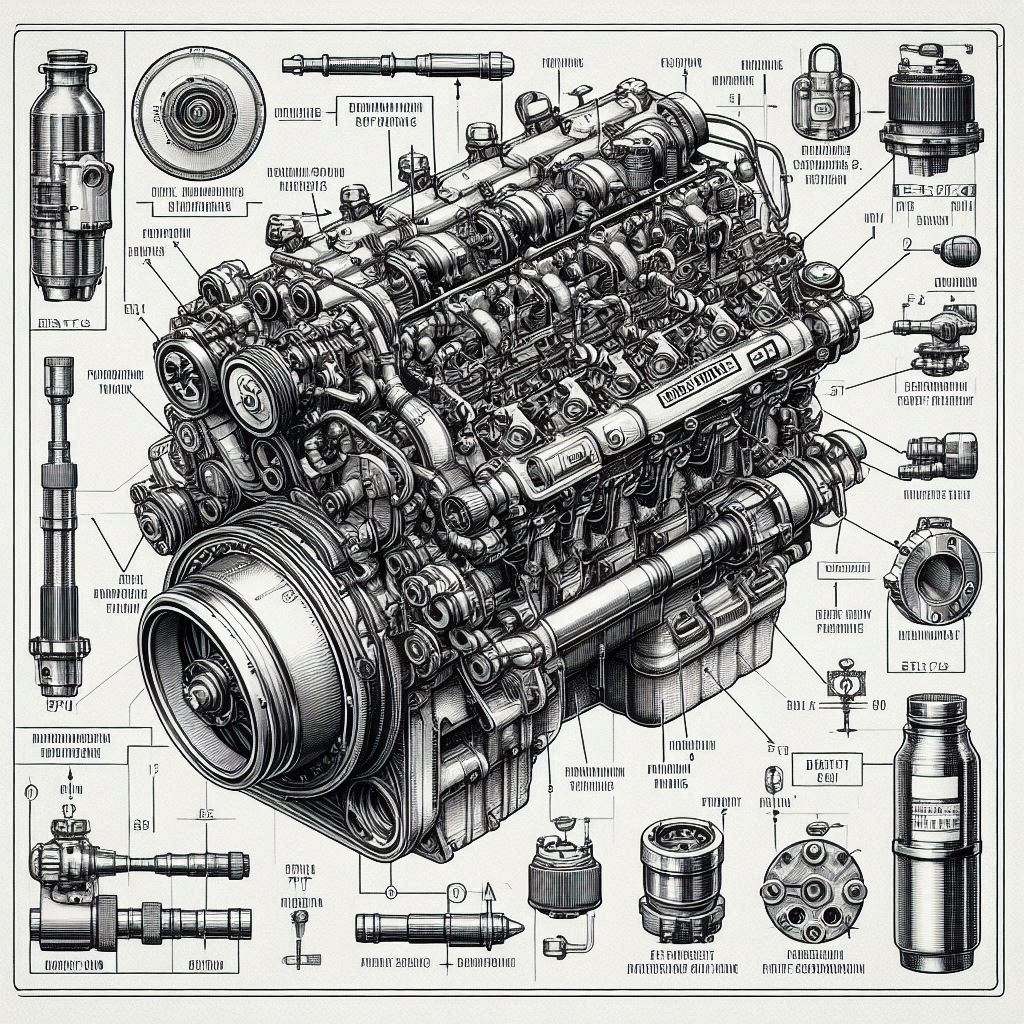
Engines, ranging from small automobiles to large, heavy vehicles and companies, all utilize diesel as their fuel source. Diesel, on the other hand, is not consistent. When it comes to quality and performance, not all diesel fuels are created equal. When it comes to diesel fuel, the most well-known German standard is EN-599. However, many individuals may be curious about what Diesel EN590 is and why it exists.
Diesel EN590 is a European standard for automotive diesel fuel quality and specifications. This was made to ensure that diesel fuel for use in vehicles anywhere in Europe (and now some other parts of the world) would have a particular performance and environmental criteria. This standard regulates the chemical composition, cleanliness, and emissions performance of diesel to ensure that engines work correctly and release fewer harmful emissions.
EN590 diesel was introduced in the 1990s to meet changing environmental regulations and advanced vehicle technology. The standard was restructured to support today’s diesel engines, which have emissions control devices such as diesel particulate filters (DPF) and selective catalytic reduction (SCR) systems. These systems also help minimize nitrous oxides and particulate matter emissions into the atmosphere.
This means that diesel fuel used in vehicles and machinery is of a specific quality density (EN590). According to the EN590 standard, severe standards are established to guarantee that diesel fuel used in modern engines contributes to reducing harmful emissions and protecting the environment. Investing in cleaner transportation and industry is vital to meet this requirement, which will assist countries in achieving their climate and air quality goals.
EN590 is needed to ensure diesel quality varies little from one place to another to prevent performance problems, increased engine wear, and higher emissions. A universal standard keeps everyone on the same page so manufacturers and consumers can feel confident that the fuel they buy is of the highest quality and will keep their vehicles in the best shape.
Being highly stringent, EN590 diesel stands out because of its proper specifications to minimize environmental impact on modern diesel engines. These specifications include several key characteristics that define the quality and performance of the fuel:
Low sulfur content is an essential aspect of EN590 diesel. Previously, diesel fuel carried high levels of sulfur, which caused deadly emissions and acid rain. However, the diesel sulfur level has been highly reduced with the introduction of EN590.
The standard (EN590) states sulfur content is capped at ten ppm. This is ULSD, or “ultra-low sulfur diesel.” Cutting sulfur can help reduce the level of sulfur in the air and allow modern diesel engines fitted with state-of-the-art emission control technology to work correctly.
The cetane number describes the diesel fuel's ignition quality. The higher the cetane number, the easier the fuel ignites, which results in smoother engine performance, better fuel economy, and lower emissions. A cetane number of at least 51 is required for EN590 diesel. This guarantees that the fuel burns efficiently, thus obtaining the correct performance for the present diesel engines.
The same as above, but density is another important diesel fuel specification that impacts its performance. Compressing the fuel molecules tight together affects the energy released when burned. This is specified in EN590 at 15°C density between 820 and 845 kg/m3. To ensure the fuel delivers the right balance of power and efficiency for vehicles and equipment, you must keep to this density range.
For diesel fuel, the viscosity is how thick or thin the fluid is and how easily it will flow through fuel injectors and other engine components. The diesel won’t flow properly if it is too thick, causing engine performance problems. It shouldn’t be too thin because it won’t provide enough lubrication, and your engine will wear more. At 40°C, EN 590 diesel must have a viscosity range between 2.0 and 4.5 mm²/s. This ensures the fuel flows smoothly through the engine and lubricates the fuel system to protect it.
Diesel fuel’s flash point is the temperature at which sufficient diesel fuel vapor forms to ignite. This specification is necessary for safety reasons since diesel with a lower flash point is more dangerous to store and transport. EN590 requires diesel fuel to have a flash point equal to or greater than 55°C. It is done because the fuel is safe to handle, and any accidental ignition is reduced.
Gel or thickened diesel fuel tends to do this at low temperatures, which can cause problems in cold weather. EN590 specifies diesel's cold flow properties, such as the cloud point and cold filter plugging point (CFPP). These properties determine how well the fuel performs in cold conditions. The exact cold flow requirements vary; however, EN 590 specifies that diesel sold in colder climates is formulated to prevent gelling and work reliably in low temperatures.
Diesel fuel burns leaves ash, a noncombustible residue. Deposits in the engine from high ash content can cause performance problems and wear on engine components. The maximum ash content by weight in EN590 diesel is 0.01%. This ensures that the fuel is clean and doesn’t leave residue, which doesn’t damage the engine.
The Diesel EN590 standard is much more than that. It is very important to make sure that contemporary diesel engines work well, are reliable, and put out less pollution. To help fulfill the needs of modern diesel vehicles while limiting environmental effects, EN590 allows the modification of essential parameters, including Sulfur concentration, Cetane number, and cold flow.